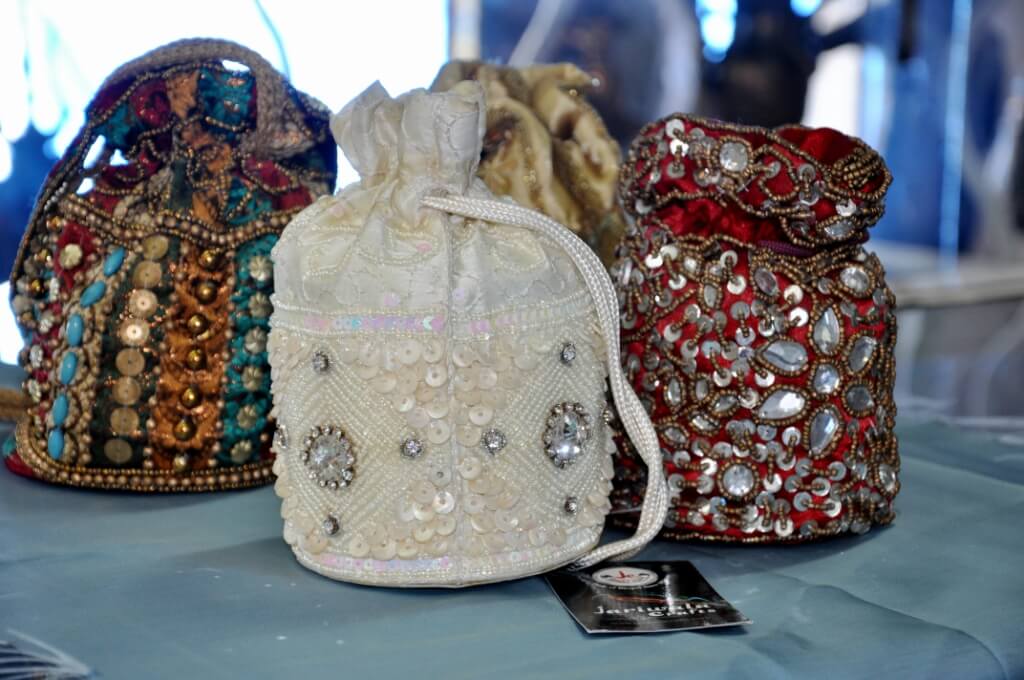Reading Time: 4 minutes
Devika tells us about a dying art form of Bhopal, batuaa making. If the government does not take notice and take measures to protect this art form it might be lost forever. Here’s a report.
Delicate drapes about the wrists adorned by exquisitely crafted Batuaas. It’s a common sight, nonetheless alluring! Even after years of changing trends in fashion accessories, these gorgeous pieces are a sight to behold. Though a dying art, Bhopal’s artistry in the field of batuaa making is age old, more than an era to be precise. The glittering handcrafted and designed batuaas came into vogue since the time of the erstwhile rulers of Bhopal. Particularly during the reign of the Begums, the artisans and their craftsmanship were at their best then.
It’s believed that royal heritage has little to do with the birth of this wonderful piece of art though. It’s the fondness for mouth-fresheners (a concoction made from roasted tamarind seed, beetle nut, etc) which brought about the very existence of these beauties. Initially it was used as a pouch to market and carry the ingredients by the traders and the connoisseurs.
Time and artistry both had a profound effect on the designs and types of materials of materials used
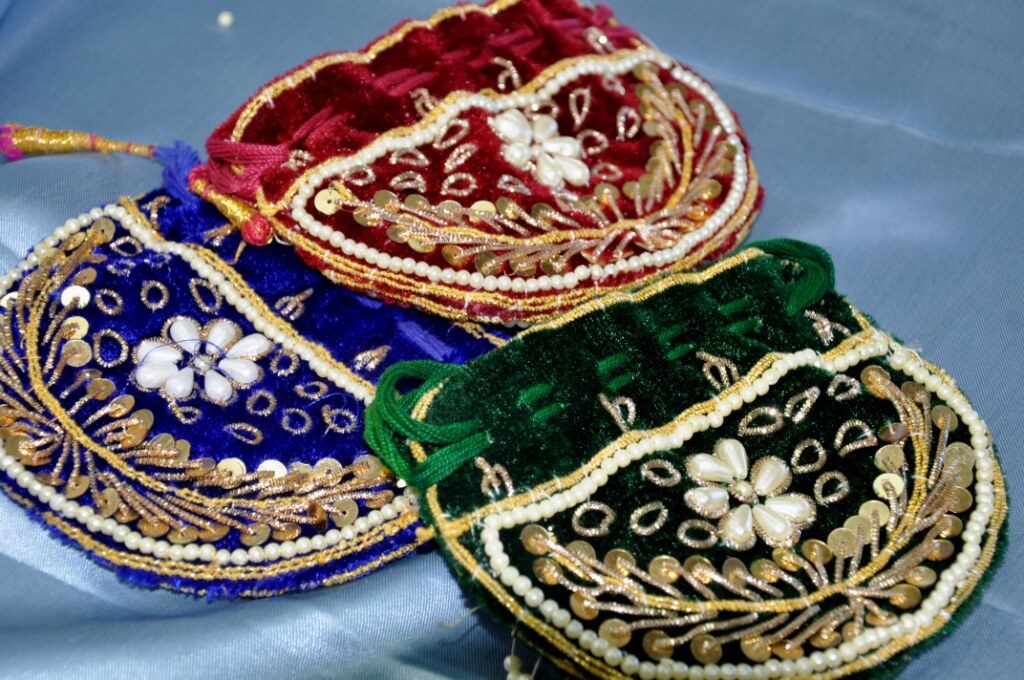
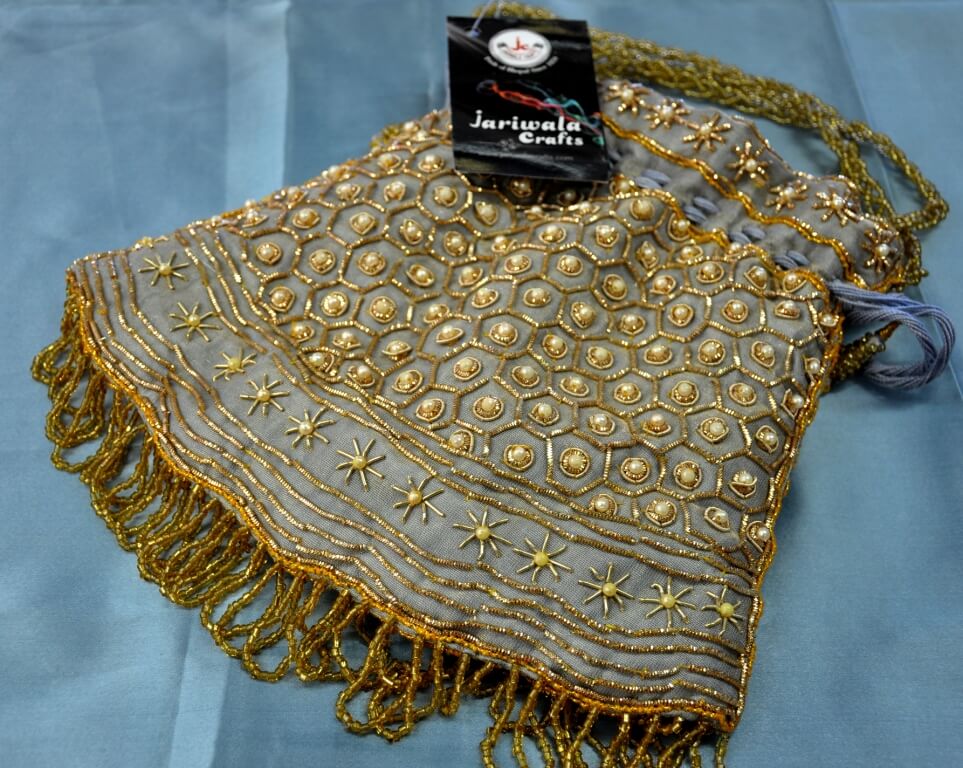
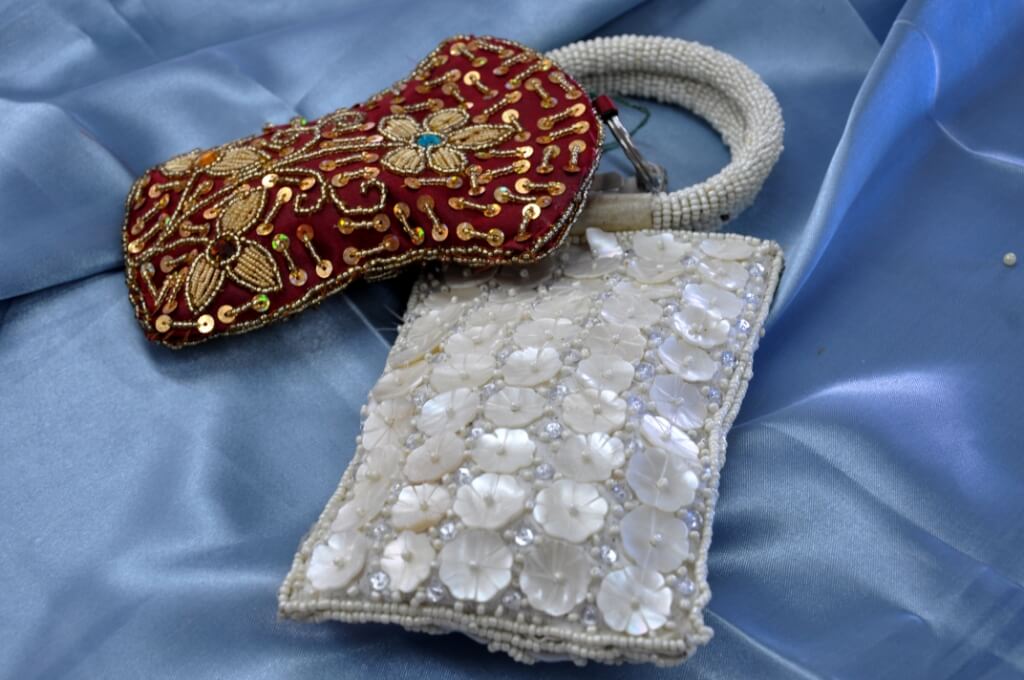
Time and artistry both had a profound effect on the designs and types of materials used. From the simple beaded versions they were later adorned with zari and silk and gems too. The erstwhile rulers encouraged the artisans to experiment with variety of Kinari, the Salma-Sitara and the Zari work. With the market demanding higher glamour quotients, soon the batuaas metamorphosed from the simple beaded styles to elaborate and exquisite designs. These were marketed and treasured in various forms. Some in the form of potlis, some as batuaa and the others as bags, purses and so on.
The workmanship is time consuming and intricate, the karigar (artisan) after deciding on the motif lays down the design on the selected material, either satin or silk, that is generally used. He then creates the patterns originating from flowers, leaves and geometric designs. Then the Ari embroidery and the embossing is done.
The old karigars still retain the design books from the past …
To create a patch of work on a metre of cloth it takes about 15-20 days, depending on the motifs chosen and the intricacies of the design. The old karigars still retain the design books from the past and modify the patterns in accordance with the contemporary demands.
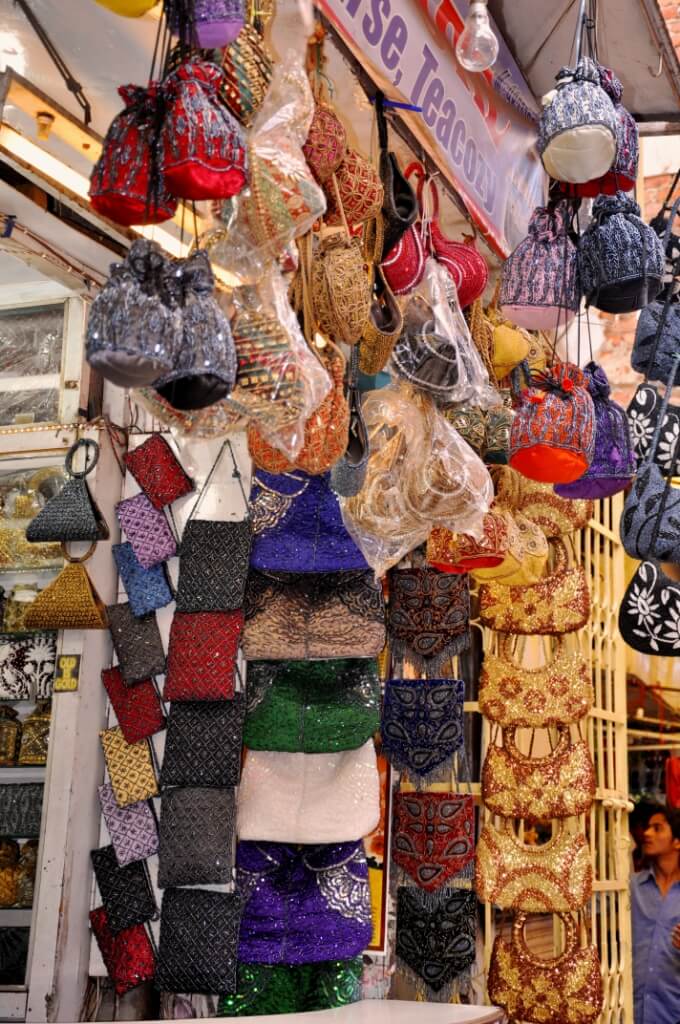
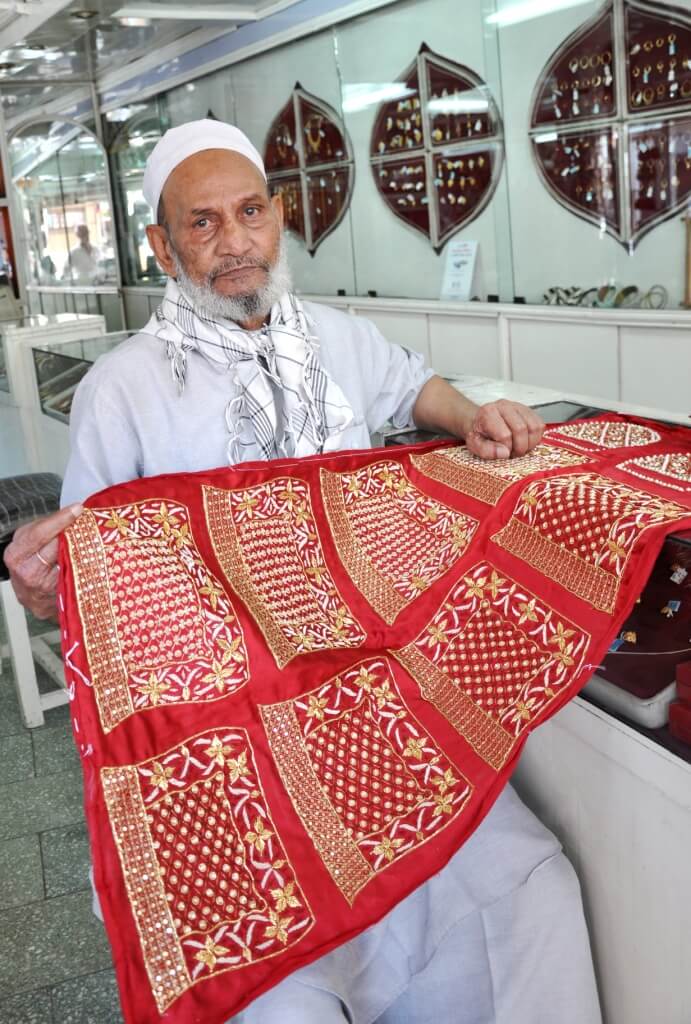

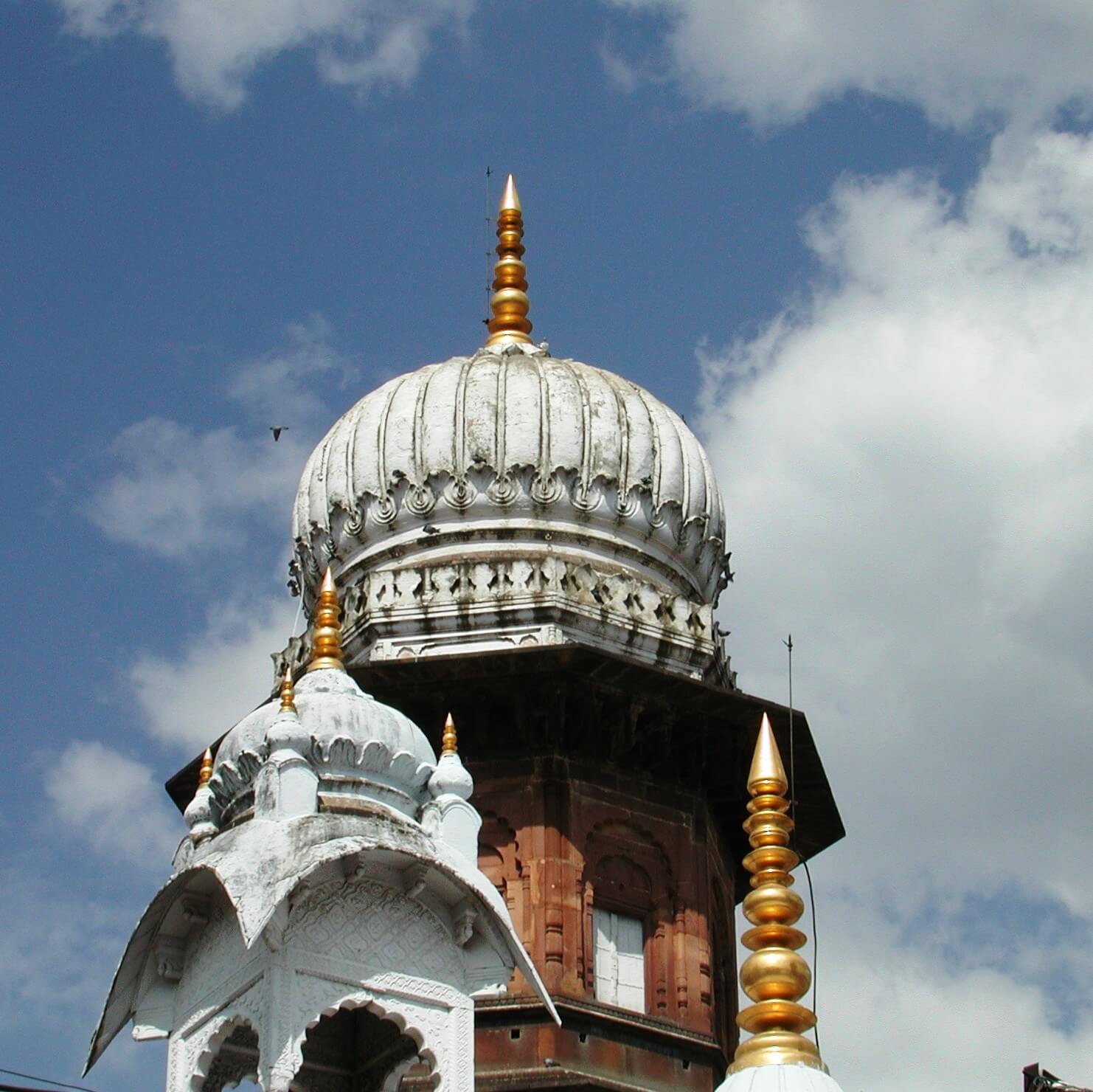
One of Bhopal’s landmark shops in this advent and history of batuaa making is that of H.C Zariwala situated at the Sarafa Chowk. They were the only ones to be in this profession then, soon to be joined by others.
I was very fortunate to have made acquaintance with 78yr old Aziz Khan, the other day. He is one of the last karigars of this dying art form and has been a part and parcel of this family. It was Aziz Miya’s father (late Wahid Khan), who had initiated him in this art form. The karkhanas (workshops) don’t exist anymore. It has become more of small scale home production, looked after by young women, catering to the likes of the market.
Any visit to Bhopal remains incomplete without a visit to the Chowk and areas such as Lakhirapura and Sarafa Bazaar. Dangling from doorways; sparkling and tempting you, will be the velvety delights. Matched to perfection with ones outfit, the Batuaa’s can compliment any generic look.
The government should take cognizance of this dying art form, if an ancient craftsmanship is to be protected from withering away.

Pictures by the author

